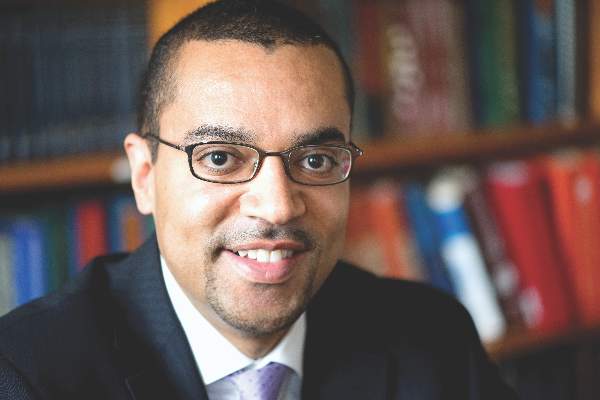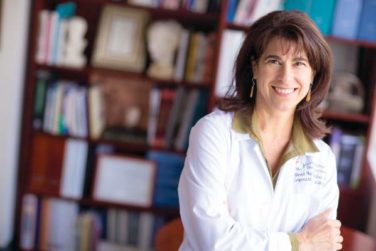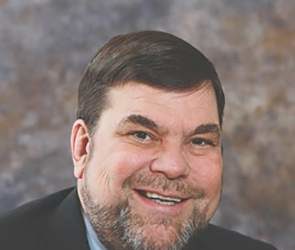Despite a growing volume of varied skin tones in the United States, the specialists charged with treating these contrasting pigments are lacking in color.
Dermatology is among the least ethnically and racially diverse specialties in medicine, a bleak fact that is becoming worse with time, said Dr. Andrew F. Alexis, chair of dermatology at Mount Sinai St. Luke’s and Mount Sinai West, New York.
“Simply put, the field of dermatology, with respect to the diversity of our workforce, is not keeping up with the diversity of the United States,” said Dr. Alexis, director of The Skin of Color Center of Mount Sinai St. Luke’s and Mount Sinai West.
Today, black dermatologists comprise 3% of all dermatologists, while 12.8% of Americans are black, according to a commentary coauthored by Dr. Alexis and published online in January in the Journal of the American Academy of Dermatology (J Am Acad Dermatol. 2016 Mar;74[3]:584-7). Just over 4% of dermatologists are of Hispanic origin, compared with 16.3% of the general population. By 2060, the number of Hispanics is expected to rise to 129 million, comprising 31% of the population, while 15% of Americans will be black and 8.2% will be Asian, according to Census Bureau estimates.
A diverse dermatology workforce is critical to treating the increasing racial and ethnic makeup of patients, said Dr. Susan C. Taylor, co-founding director of The Skin of Color Center and a Philadelphia-based dermatologist. Studies show that race-concordant visits are longer and have higher ratings of patient satisfaction, according to the JAAD article. Data show that minority physicians are more likely to care for patients of their own race or ethnic group, practice in underserved areas, care for poor patients and those with Medicaid, and treat patients who report poor health status.
“It’s so important to make sure we have a diverse workforce,” Dr. Taylor said in an interview at the annual Skin of Color seminar, recently held in New York City. “Individuals with skin of color, when they’re trained in dermatology, they go back to their communities and really make a difference.”
The dearth of diverse dermatologists and the rising minority population are fueling renewed efforts by dermatology leaders to increase the racial and ethnic variance of their specialty.
“First and foremost, we must make the achievement of racial/ethnic diversity a goal for dermatology,” Dr. Alexis and his coauthors wrote in JAAD. “This is a call to action. The time is now.”
Lack of exposure, mentors spur problem
A number of reasons contribute to the lack of diversity in dermatology, said Dr. Bruce U. Wintroub, vice dean of the University of California, San Francisco, School of Medicine. A narrow pipeline starting early in education is one source of the problem, he said. A large proportion of minority students fail to move from high school to college and from college to medical school, leaving a smaller pool of diverse students heading to medical school.
In addition, “medical students from underrepresented populations do not chose dermatology as frequently as they chose other specialties,” said Dr. Wintroub, who chairs UCSF’s dermatology department. “The question is: Can we attract more of these medical students into dermatology, and how can we be more effective at that?”
Lack of exposure to dermatology leads many students to choose a different route, Dr. Taylor added. Often, medical students are not aware of dermatology as a specialty until they are far advanced in their training, she said. Dr. Taylor herself switched to dermatology after a 3-year internal medicine residency. Had she been exposed to dermatology at an earlier point in her education, she may have pursued the specialty sooner, she noted.
“It’s very important to enlighten and educate medical students about the importance of dermatology as a specialty and see if we can recruit them and interest them in dermatology,” Dr. Taylor said in the interview.
An absence of mentors for minority students throughout their schooling also drives the disparity, said Dr. Amit Pandya, chair of the American Academy of Dermatology Diversity Task Force and a dermatologist at the University of Texas Southwestern Medical Center, Dallas, who is the lead author of the January JAAD article.
“It’s not lack of bright students,” Dr. Pandya said in an interview. “They don’t have the mentorship many times, or the role models or people to guide them to” these areas.
Building diversity in dermatology
To address the gap, the AAD Diversity Task Force created the Diversity Mentorship Program, which provides a stipend to promising medical students from underrepresented backgrounds to spend 1 month with a dermatologist. The program aims to spark interest in the specialty.
The task force is currently developing a program called the Diversity Champion Initiative, Dr. Pandya said. The initiative will gather information about successful diversity activities at medical schools nationwide and replicate such efforts at other institutions. The idea is to help schools learn from each other and build on programs already in practice.
At the University of Texas Southwestern, for example, Dr. Pandya meets with medical students during their first month of training and brings them to his home for a pizza party. The students hear from other dermatologists of color about why they chose dermatology and the importance of drawing more minorities into the specialty. Dr. Pandya holds a similar gathering for local premed college students.
“I offer these students a chance to come to our free clinic in East Dallas so they can observe how important we are to the minority population of Dallas,” he said. “Patients line up starting at 5 in the morning for our 8:30 clinic start because they’re desperate to get skin care. We are only one of two clinics that offer free dermatology services in the Dallas-Fort Worth metropolitan area.”
Dermatologists are making similar efforts to reach minority medical students at UCSF. The dermatology department is working with the school’s residency committee and hiring leaders to broaden selection criteria, said Dr. Eleni Linos, a UCSF dermatologist who leads diversity efforts at the school. The goal is to change criteria to allow for acceptance of more minority residents and physicians.
“Through mentorship programs, we’re ensuring medical students from all backgrounds are exposed to all aspects of dermatology early on,” Dr. Linos said in an interview. “What we want to do, as a next step, is teach all of our faculty about unconscious bias and implicit bias and the way it can affect our clinical practice as well as our hiring and our interaction with students and trainees.”
Mentorship is also a key aspect of the The Skin of Color Center of Mount Sinai St. Luke’s and Mount Sinai West. Cofounded in 1999 by Dr. Taylor, Dr. Vincent A. DeLeo, and Dr. Fran Cook-Bolden, the center specializes in the diagnosis and treatment of skin conditions common to patients of color. Along with conducting research, producing literature, and hosting seminars, the center also trains a number of residents and fellows, Dr. Alexis said.
“Over the past 17 years, the awareness of the nuances of treating common dermatological disorders in patients with skin of color has really advanced,” he said. “We see a growing interest throughout the dermatological community – nationally and internationally – in this area, largely due to early efforts of this center.”
A total of nine ethnic skin centers now exist in the United States. And in 2004, Dr. Taylor helped establish the Skin of Color Society, an international association that promotes awareness and excellence for skin of color dermatology.
More work needed among departments, practices
Dr. Linos encourages more dermatology program directors and residency committees to review their admission and hiring criteria. Criteria should be objective, predefined, and not biased against minority applicants, she said. “We know that relying on test scores alone can be a disadvantage for some minority applicants,” she noted. “Broader criteria that are predefined and explicitly defined are very helpful for ensuring equity and increasing diversity.”
Dermatology leaders want more dermatologists to act as mentors. Talk to high school and college-aged patients from underrepresented groups and encourage them to enter medicine, the JAAD article suggests. Volunteer at schools and encourage minority students to pursue careers in science and health. Contact minority medical school associations and engage the members, Dr. Pandya added.
“Talk to them about why [you] went into medicine and dermatology, he said. “Become their advisor, make [yourself] available for any questions they may have. This helps enormously in getting medical students interested in dermatology.”
On a positive note, dermatology as a specialty is clearly starting to understand the importance of diversity, according to Dr. Alexis. Making “a more concerted effort to feed the pipeline and encourage potential students early on in their career to consider dermatology as a specialty will undoubtedly lead to increased diversity in the future,” he said.
On Twitter @legal_med





